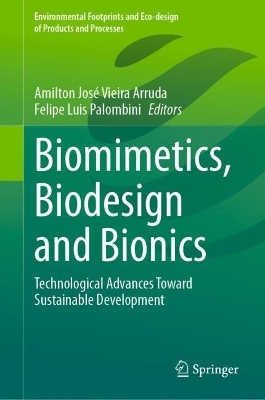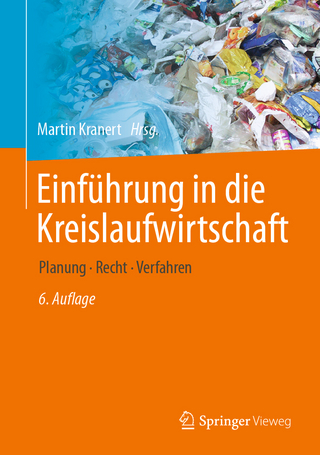
Biomimetics, Biodesign and Bionics
Springer International Publishing (Verlag)
978-3-031-51310-7 (ISBN)
Nature is a vast source of inspiration and information for the resolution of complex problems and can influence many varieties of design. Biomimetics, biodesign and bionics are three branches of interdisciplinary research merging biological and applied sciences. This volume collects cases that highlight recent breakthroughs in these disciplines. Biological features such as patterns, shapes, mechanisms, colors, structures, and more can be analyzed, organized, and modeled for application in human creations. Therefore, design, engineering, and architecture projects can benefit from solutions that were already tested and verified through evolution in the natural world. With the development of new technologies for the investigation, simulation, and testing of natural features, the path from nature to product can be accelerated. The cases presented in this work showcase how technological advancements are leading to improved design solutions and influencing our very comprehension of natureand its complex organization.
Dr. Felipe Luis Palombini is an Assistant Professor of the Department of Industrial Design (DDI) and Professor of the Graduate Program of Architecture, Urbanism, Landscaping (PPGAUP) at the Federal University of Santa Maria (UFSM) in Santa Maria (Brazil). Felipe Palombini received his M.Sc. and his Ph.D. in Design and was a Post-Doctoral Researcher fellow in the Graduate Programs of Botany (PPGBot) at the Federal University of Rio Grande do Sul (UFRGS), in Porto Alegre (Brazil). His main research topics are focused on Bionics, Sustainability, Design, Cellular Materials, and Materials Characterization via Finite Element Analysis and X-ray Microtomography. He is the Lab head of the Innovation and Sustainability in Design Lab (NOVA/UFSM), and is associated with the Design and Computer Simulation Research Group (DSC/UFRGS), and the Plant Anatomy Laboratory (LAVeg/UFRGS).
Dr. Amilton J. V. Arruda. Graduate in Product Design Industrial Design from UFPE (1982), Master in Design and Bionics from the IED of Milan (1992), Doctorate in Research in Industrial Design - Ph.D. by Polytechnic University of Milan (2002) and post-doctorate in Design and Bionics from IADE European University UNIDCOM Lisbon (2018/2019) and Luigi Vanvitelli Naples (2021/2022). Since 1985 professor of the Design Course from UFPE. He is currently an Associate Professor IV. Coordinates the Biodesign and Artifacts Industrial Research Group.
Chapter 1 Didactic/Methodological Proposal.- Chapter 2 Bionics and Design.- Chapter 3 Bio-digital 'material systems'.- Chapter 4 Echinodesign.- Chapter 5 Biodigital Product Design.- Chapter 6 Method and processes for abstraction of natural micro-structures for new product development.- Chapter 7 Biomimetics and 4D Printing.- Chapter 8 Innovative trends in academic pavilions.- Chapter 9 Levels of access to biomimetics.- Chapter 10 Biodesign as a tool to achieve sustainable construction through additive manufacturing.
| Erscheinungsdatum | 15.05.2024 |
|---|---|
| Reihe/Serie | Environmental Footprints and Eco-design of Products and Processes |
| Zusatzinfo | VI, 284 p. 183 illus., 156 illus. in color. |
| Verlagsort | Cham |
| Sprache | englisch |
| Maße | 155 x 235 mm |
| Themenwelt | Kunst / Musik / Theater ► Design / Innenarchitektur / Mode |
| Naturwissenschaften ► Biologie ► Ökologie / Naturschutz | |
| Naturwissenschaften ► Geowissenschaften | |
| Sozialwissenschaften ► Politik / Verwaltung | |
| Technik ► Umwelttechnik / Biotechnologie | |
| Schlagworte | Architecture • Biologically-driven design • Biomimicry • Nature-driven innovations • nature-inspired design • Parametric Design |
| ISBN-10 | 3-031-51310-X / 303151310X |
| ISBN-13 | 978-3-031-51310-7 / 9783031513107 |
| Zustand | Neuware |
| Informationen gemäß Produktsicherheitsverordnung (GPSR) | |
| Haben Sie eine Frage zum Produkt? |
aus dem Bereich


